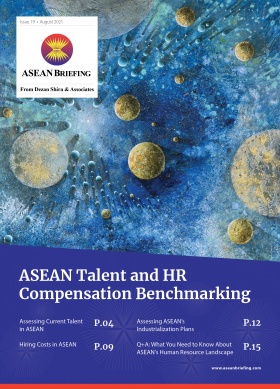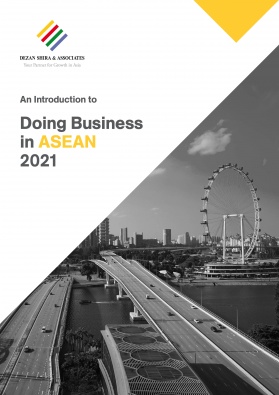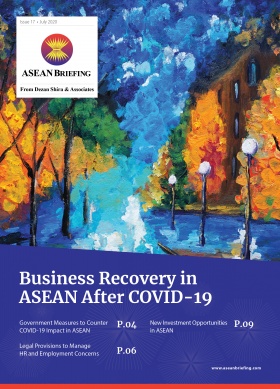The UK Starts Talks to Join CPTPP, Seeking Access to ASEAN
The UK has formally begun negotiations to join the Comprehensive and Progressive Agreement for Trans-Pacific Partnership (CPTPP) trade deal, as the country seeks to establish closer trade ties with Asia following its withdrawal from the European Union (EU).
The CPTPP’s predecessor was the Trans-Pacific Partnership (TPP), which fell apart after years of negotiations when the US exited the deal before its ratification.
The UK’s interest in joining the CPTPP shows the government’s ambitions in expanding economic ties with Asian markets beyond China, such as with ASEAN. British businesses can utilize Singapore (a CPTPP member) to expand into the ASEAN consumer market of 600 million people.
What is the CPTPP?
The CPTPP is a major trade pact comprised of the Pacific countries of Australia, Brunei, Canada, Chile, Japan, Malaysia, Mexico, New Zealand, Peru, Singapore, and Vietnam. Together, these countries represent about 500 million people.
The deal has its roots in the TPP, which all parties signed in 2016 – including the US – following years of negotiations.
Upon winning the presidency, however, Donald Trump withdrew the US’ signature in 2017 before its ratification. After the TPP fell apart, the remaining countries reached an agreement in early 2018 to sign the CPTPP.While all 11 members have signed the deal, it has not yet come into force for all parties. The CPTPP became effective for the first six to ratify – Australia, Canada, Japan, Mexico, New Zealand, and Singapore – on December 30, 2018. It came into force shortly after for Vietnam, on January 14, 2019. Next, the CPTPP is set to take effect for Peru on September 19, 2021.
The 11 CPTPP members represent about US$13.5 trillion in GDP, or 13.4 percent of global GDP, making it one of the world’s largest trade deals.
The CPTPP eliminates or reduces at least 95 percent of tariffs on internationally traded products among member countries. It also requires members to cooperate on a number of regulatory issues, such as labor, environment, food, and intellectual property standards, though it does not compel them to have identical regulations.
Besides the size of the deal, the CPTPP is also notable as the first major international trade deal to address digital trade, namely e-commerce.
How did the UK enter trade negotiations?
The UK first began exploring the possibility of joining the CPTPP in 2018, as the government sought new trade opportunities in the wake of Brexit. The UK released a policy paper in 2020, where it confirmed its interest in the agreement, before formally applying to join the CPTPP on February 1, 2021.
On June 2, 2021, parties to the CPTPP agreed to commence the accession process with the UK and to establish an Accession Working Group to manage negotiations. A joint statement released by CPTPP members stated that the CPTPP is open to accession by economies committed to promoting free trade, open and competitive markets, and economic integration in the Asia Pacific region and beyond.
The UK is not the only country considering joining the CPTPP. Other potential entrants include Thailand, South Korea, the Philippines, and even the US. No country has joined the CPTPP since its signing in 2018.
How does the UK benefit from joining?
The UK government seeks to boost exports to fast-growing Asia Pacific markets by joining the deal, but experts are divided on how impactful the deal with be in practice.
In 2019, the UK’s total trade with CPTPP countries was worth about GBP 110 billion (US$150 billion). From 2016 to 2019, the UK government said trade with CPTPP members increased by 8 percent per year and by 2030, the country’s exports to CPTPP members stand to grow by 65 percent to a total of GBP 37 billion – even without joining the deal.
It is unclear how much of a boost the UK would get if it entered the trade bloc, however, because it already has deals in place with the majority of the members.
Nevertheless, joining the CPTPP would boost the scope of the UK’s trade deals with some of its partners. The UK highlighted several industries that would benefit from the CPTPP, including digital sectors, services, and finance, as well as increased demand for products such as automobiles. Overall, the UK states that entering the CPTPP would remove tariffs on 99.9 percent of goods.
Increased access to ASEAN
The CPTPP would give UK businesses increased access to the ASEAN market of more than 600 million consumers, despite not all ASEAN countries being a signatory to the agreement.
The most obvious route to achieve this would be to incorporate a company in Singapore, a country with whom the UK also has a trade agreement, which was updated in early 2021. Singapore is a hub for many British companies, such as Dyson, GSK, Rolls Royce, Pearson, Standard Chartered, Unilever, Shell, BP, and Barclays, who are able to subsequently access ASEAN and the broader Asia-Pacific markets more easily.
There are also numerous British-owned small and medium enterprises (SMEs) in Singapore given the reportedly 40,000-plus community of largely entrepreneurial UK expatriates resident there.Moreover, Singapore has been cementing relations not only with its Southeast Asian neighbors but in the broader region by acceding to several free trade agreements (FTA). This includes the Regional Comprehensive Economic Partnership (RCEP), said to be the world’s largest FTA, in addition to FTAs and economic partnerships with Japan, India, South Korea, China, and Australia, among others.
Although some regional players maintain strong FTA networks, ASEAN member states have not matched Singapore’s extensive FTA network.
What needs to be resolved?
Although the UK’s pre-existing trade deals will expedite the accession process, the size of its economy demands further negotiations for members to sign off. With a GDP of US$2.83 trillion in 2019, the UK would be the group’s second-largest economy after Japan, which had a GDP of US$5.1 trillion that year.
The UK government will also need to satisfy domestic stakeholders that may be wary of the deal. The UK’s agricultural sector, for example, is a major constituency that would need to be convinced of the value of joining the CPTPP. UK farmers fear that joining the deal would flood the market with lower cost and lower quality meat from overseas countries.
Canada and Japan, among other countries, faced similar hurdles in dealing with politically sensitive constituencies when negotiating the CPTPP. Ultimately, they came to an agreement to enter the deal by securing protections for their local dairy and rice farming industries, respectively.
While negotiations to join the CPTPP are unlikely to be resolved until 2022 at the earliest, the UK has also expressed its interest in strengthening ties to Southeast Asia in the immediate term. The UK, for example, recently stated its desire to achieve “dialogue partnership” status with ASEAN.
Regardless of how the CPTPP takes shape, the UK government evidently sees Southeast Asia as a key driver of economic growth and engagement.
About Us
ASEAN Briefing is produced by Dezan Shira & Associates. The firm assists foreign investors throughout Asia and maintains offices throughout ASEAN, including in Singapore, Hanoi, Ho Chi Minh City, and Da Nang in Vietnam, Munich, and Esen in Germany, Boston, and Salt Lake City in the United States, Milan, Conegliano, and Udine in Italy, in addition to Jakarta, and Batam in Indonesia. We also have partner firms in Malaysia, Bangladesh, the Philippines, and Thailand as well as our practices in China and India. Please contact us at asia@dezshira.com or visit our website at www.dezshira.com.
- Previous Article How to Claim Investment Promotion Incentives in Laos: New Guidelines in Effect
- Next Article A Guide to Withholding Taxes in Singapore








